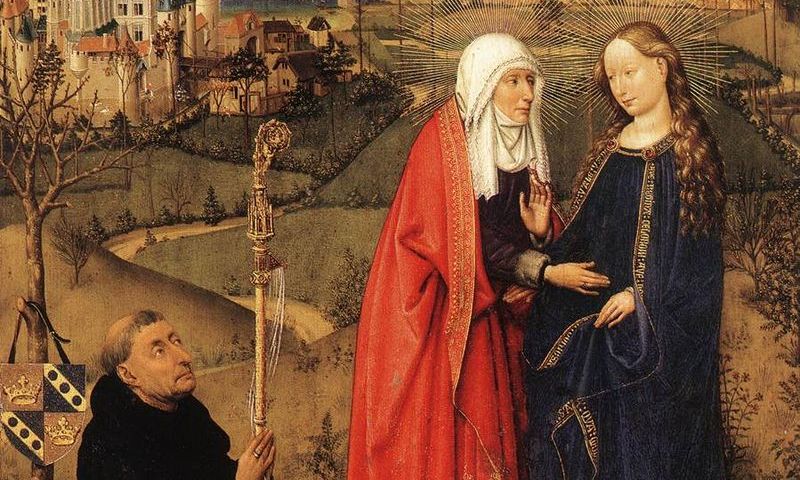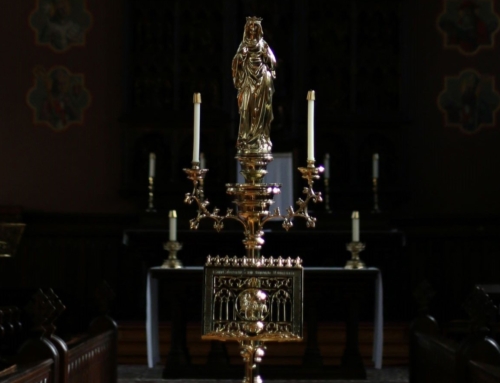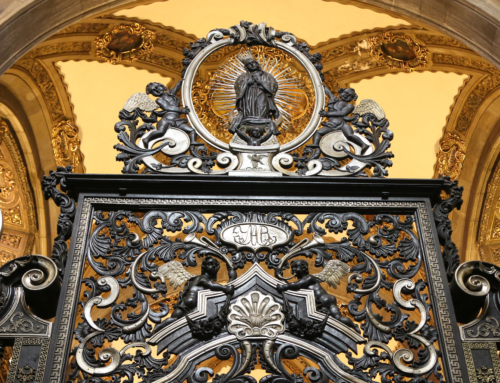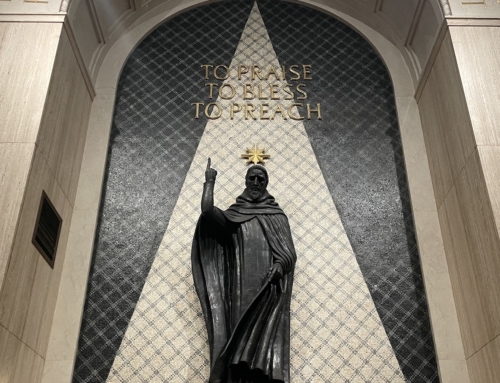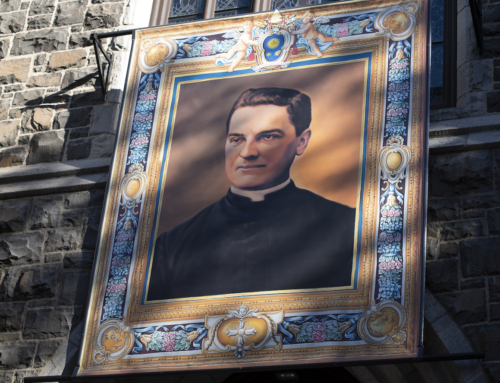According to the Oxford English Dictionary, the first recorded use of the colloquial expression “a bun in the oven” appeared in a mid-twentieth century novel, Nicholas Monsarrat’s The Cruel Sea. Others suggest that the imagery goes as far back as Greek mythology. According to Beryl Rowland, “The ancient gods such as Zeus were conceived as millers and their consorts as mills; the human race was the product they ground and baked, and on a terrestrial scale, man and woman performed similar functions.” The image, if not the exact expression, also appears in an unexpected place: St. Thomas Aquinas’s Summa Theologiae.
In a question on the nature and symbolism of the ceremonial precepts of the Mosaic Law, Thomas expands on the biblical phrase “the living bread” from John 6:
[Christ] was like perfect bread after He had taken human nature; baked in the fire, i.e. formed by the Holy Ghost in the oven of the virginal womb; baked again in a pan by the toils which He suffered in the world; and consumed by fire on the cross as on a gridiron. (ST I-II, q. 102, a. 3, ad 12)
The quaintness of the expression belies a profound truth. When most of us read John 6, we instinctively (and rightly) take it to refer to the Eucharist. If we ponder a little more deeply, we probably take the further step of interpreting the Eucharist in light of the cross and the resurrection. But St. Thomas digs even deeper, seeking to discern a figurative connection between Christ’s status as the Bread of Life and the various sacrifices of the Old Testament (hence the references to the oven, the pan, and the gridiron). The fruits of his contemplation lead St. Thomas to develop a notion that goes back at least to the great Church Father, St. Irenaeus of Lyons. Expounding on the significance of the Incarnation, Irenaeus suggested that each stage of Christ’s life had salvific value:
For [Christ] came to save all through means of Himself – all, I say, who through Him are born again to God – infants, and children, and boys, and youths, and old men. He therefore passed through every age, becoming an infant for infants, thus sanctifying infants; a child for children, thus sanctifying those who are of this age, being at the same time made to them an example of piety, righteousness, and submission; a youth for youths, becoming an example to youths, and thus sanctifying them for the Lord. (Against Heresies 2.22.4)
For St. Thomas, though, it is not simply Christ’s passing through each stage of human life that saves us. Rather, it is that each stage of Christ’s life is in some sense a sacrifice. In another place Thomas writes, “A ‘sacrifice,’ properly speaking, requires that something be done to the thing which is offered to God.” In Christ’s life, this happened most evidently at the crucifixion, when, like the animals and bread sacrificed under the Old Law, he was “consumed by fire on the cross as on a gridiron.” But in his day-to-day life, too, Christ offered himself as a sacrifice, being “baked again in a pan by the toils which He suffered in the world.” And yes, even from the moment of his conception, the Bread of Life made an oblation of himself, “baked in the fire, i.e. formed by the Holy Ghost in the oven of the virginal womb.”
From first to last, Christ’s life on earth was an offering to the Father on behalf of the whole human race – not a single moment of the Incarnation was superfluous. By this act of profound humility, Christ elevated the dignity of human life in all its stages, taking the flesh he received from the Blessed Virgin and making of it a perfect sacrifice to God. When we approach the Bread of Life in the Eucharist, we, too, receive the strength to make of our lives a sacrifice to God. Through the intercession of the Blessed Virgin Mary, the “oven” in which the “Bun of Life” was first formed, may we be more and more conformed to his image, fearlessly undergoing the consuming fire that will lead to everlasting joy.
✠
Image: Jacques Daret, Visitation

